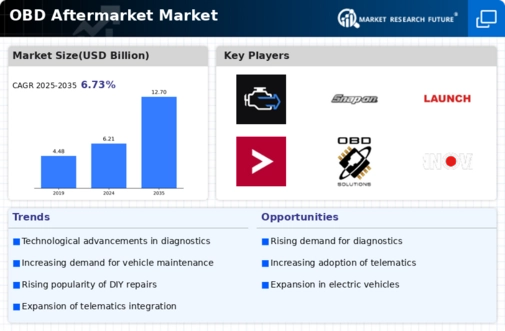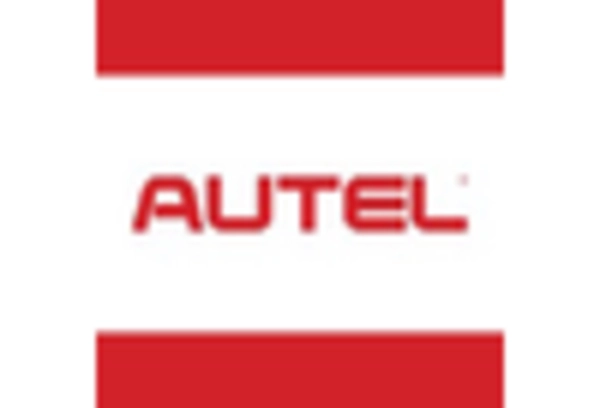Increasing Vehicle Complexity
The OBD Aftermarket Market is experiencing a surge in demand due to the increasing complexity of modern vehicles. As vehicles incorporate advanced technologies, such as electronic control units and sophisticated diagnostic systems, the need for effective diagnostic tools becomes paramount. This complexity necessitates the use of On-Board Diagnostics (OBD) systems, which provide critical data for vehicle maintenance and repair. The OBD Aftermarket Market is projected to grow as vehicle manufacturers continue to innovate, leading to a higher demand for aftermarket diagnostic tools that can interface with these advanced systems. Furthermore, the increasing number of vehicles on the road, estimated to reach over 2 billion by 2025, further fuels the need for OBD solutions, thereby enhancing the market's growth potential.
Rising Awareness of Vehicle Maintenance
Consumer awareness regarding the importance of regular vehicle maintenance is a key driver for the OBD Aftermarket Market. As vehicle owners become more informed about the benefits of proactive maintenance, they are increasingly seeking tools that facilitate self-diagnosis and repairs. This trend is reflected in the growing sales of OBD scanners and diagnostic tools, which empower consumers to monitor their vehicle's health. The OBD Aftermarket Market is likely to benefit from this shift, as more individuals opt for DIY maintenance solutions. Additionally, the rise of online platforms and communities dedicated to vehicle maintenance has further amplified this awareness, leading to an increase in demand for OBD products that cater to the needs of informed consumers.
Technological Advancements in OBD Systems
The OBD Aftermarket Market is significantly influenced by rapid technological advancements in diagnostic systems. Innovations such as wireless connectivity, mobile applications, and cloud-based diagnostics are transforming how vehicle diagnostics are performed. These advancements not only enhance the functionality of OBD tools but also improve user experience, making it easier for consumers to access and interpret diagnostic data. The integration of artificial intelligence and machine learning into OBD systems is also emerging, allowing for predictive maintenance and more accurate diagnostics. As these technologies continue to evolve, the OBD Aftermarket Market is expected to expand, driven by the demand for more sophisticated and user-friendly diagnostic solutions.
Growth of the Automotive Aftermarket Sector
The overall growth of the automotive aftermarket sector is a significant driver for the OBD Aftermarket Market. As the automotive industry evolves, the aftermarket segment is expanding, driven by factors such as increased vehicle ownership and the rising average age of vehicles on the road. This trend creates a larger customer base for OBD products, as older vehicles often require more frequent diagnostics and repairs. The OBD Aftermarket Market stands to benefit from this growth, as consumers seek reliable diagnostic tools to maintain their vehicles. Additionally, the increasing trend of vehicle customization and enhancement further fuels the demand for OBD solutions, as enthusiasts look for ways to optimize vehicle performance and efficiency.
Regulatory Compliance and Emission Standards
The OBD Aftermarket Market is also shaped by stringent regulatory compliance and emission standards imposed by governments worldwide. As environmental concerns grow, regulations regarding vehicle emissions have become more rigorous, necessitating the use of OBD systems to monitor and control emissions effectively. This regulatory landscape compels vehicle owners and repair shops to invest in OBD diagnostic tools to ensure compliance with these standards. The OBD Aftermarket Market is likely to see increased demand for products that assist in meeting these regulations, particularly as penalties for non-compliance become more severe. Consequently, the market is poised for growth as stakeholders seek reliable solutions to navigate the complexities of regulatory requirements.


















Leave a Comment